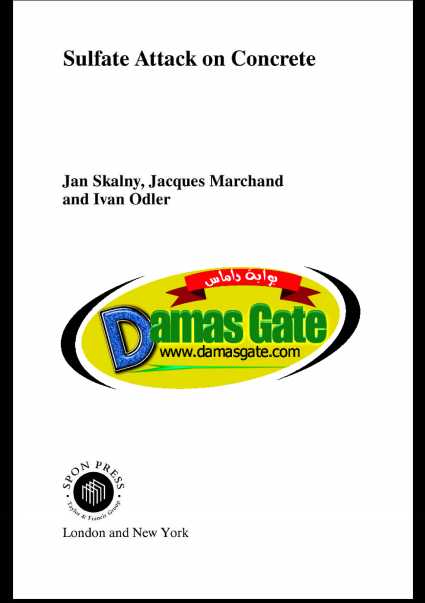Sulfate Attack on Concrete

Preface
We consider it to be a great honor to be chosen by Professors A. Bentur and
S. Mindess to prepare this book for publication by Spon Press and it was not
without trepidation that we accepted the task to summarize the available
knowledge on the effect of sulfates on concrete. We were hesitant because
the mechanistic issues of sulfate attack on concrete are complex and sometimes
controversial.
The multidimensionality of the sulfate attack issues becomes obvious
when one realizes the variability of the environmental conditions under
which concrete is used, of the complex chemistry and mineralogy of the concrete
components, and of the less-than-well-defined processing conditions
used in making concrete to be used in a variety of structures. In discussing
sulfate attack mechanisms, one has to deal, among others, with issues of
chemical and mineralogical composition of the aggressive species, properties
of amorphous to crystalline reaction products, variability and limited controllability
of the reaction (curing) conditions, and to consider difficult issues related
to best testing methodology, standardization, prediction of service
life by modeling, etc. All the above make consolidation of the existing knowledge
a considerable challenge.
The book is prepared for an audience consisting of students of materials
engineering, construction practitioners, and researchers. As the loss of durability
of concrete almost always involves chemical and physico-chemical
processes, it may be difficult for some readers to follow the intricate details
of sulfate attack mechanisms. To overcome this, we included a few chapters
summarizing the basics of cement hydration and concrete deterioration. It is
entirely possible that for some, the book contains excessive information;
others may consider the given details to be inadequate. There will be voices
disagreeing with our interpretation of the “average” literature data. To these
we can only say that we did our best to consolidate the available data in an
understandable manner and we suggest that, if needed, the readers visit the
references given at the end of each chapter.
Download
http://s18.alxa.net/s18/srvs2/02/002...n.Concrete.rar